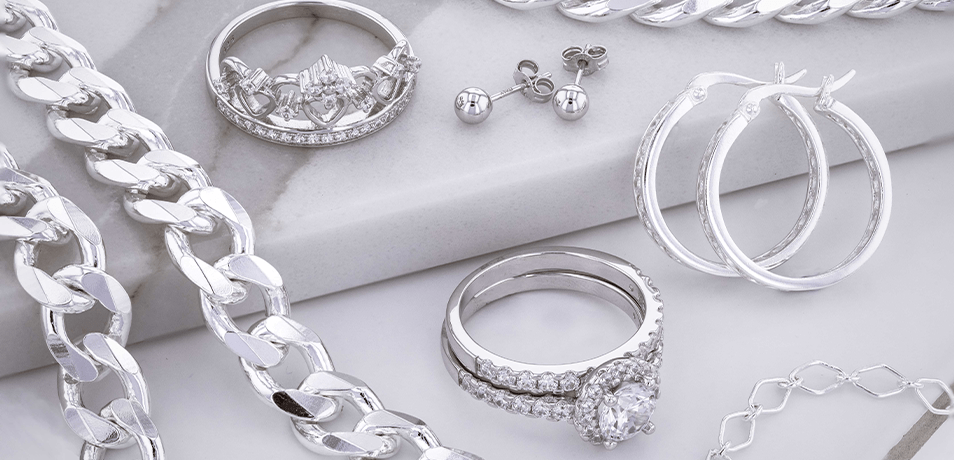Top questions about silver jewellery

Facts About Silver
- The most common form of silver is sterling silver. This is actually 92.5% pure silver, with the other 7.5% made up of other metals including copper.
- Other metals are added to silver jewellery so that the silver is more durable and lasts longer.
- Silver objects have been found dating as far back as 4000 BC.
- In ancient Egypt, silver was valued much more highly than gold.
- Silver jewellery was often associated with special powers by ancient civilisations as they believed it brought healing powers, good fortune, and warded off evil spirits.
- Silver has also been used in medicinal settings due to its antibacterial properties.
- Silver is one of the words in the English language that has no other words that rhyme with it.
- Silver is the most reflective element, reflecting 95% of the visible light spectrum.
Blog Posts
FAQs About Silver Jewellery
Why is silver good for jewellery?
Silver jewellery has been a mainstay of jewellery for centuries. Silver is the most versatile precious metal. It is durable, tarnish resistant, and can be used in a wide variety of jewellery designs.
What are the different types of silver used in jewellery?
100% pure silver is not used in jewellery because it is too soft. Therefore, sterling silver is the most common form of silver used in jewellery. Silver plating is also used in jewellery as a low-cost alternative.
Can you wear silver in water?
Wearing silver in water can cause your jewellery to tarnish quicker. It is always recommended to remove your silver jewellery before swimming or showering. Learn more in our ‘can you wear sterling silver in the shower?’ blog.
Can you wear silver every day?
Yes, absolutely. Just use common sense as you would with any fine jewellery. Silver can discolour if it comes into contact with chlorine bleach, strong acids and other chemicals, or is left in direct sunlight for an extended period of time. Find out more in our ‘does sterling silver tarnish if worn daily?’ blog.


